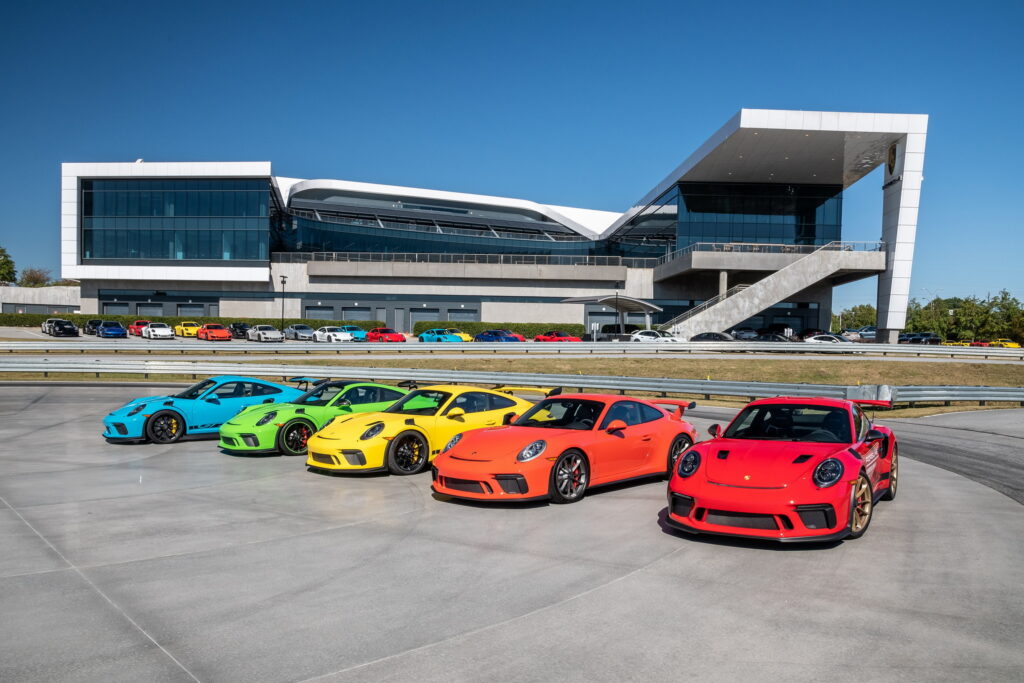The Porsche Experience Center in Atlanta offers everything you need to enhance your driving skills, whether on the track or off-road
February 17, 2024 at 12:11
 –>
–> 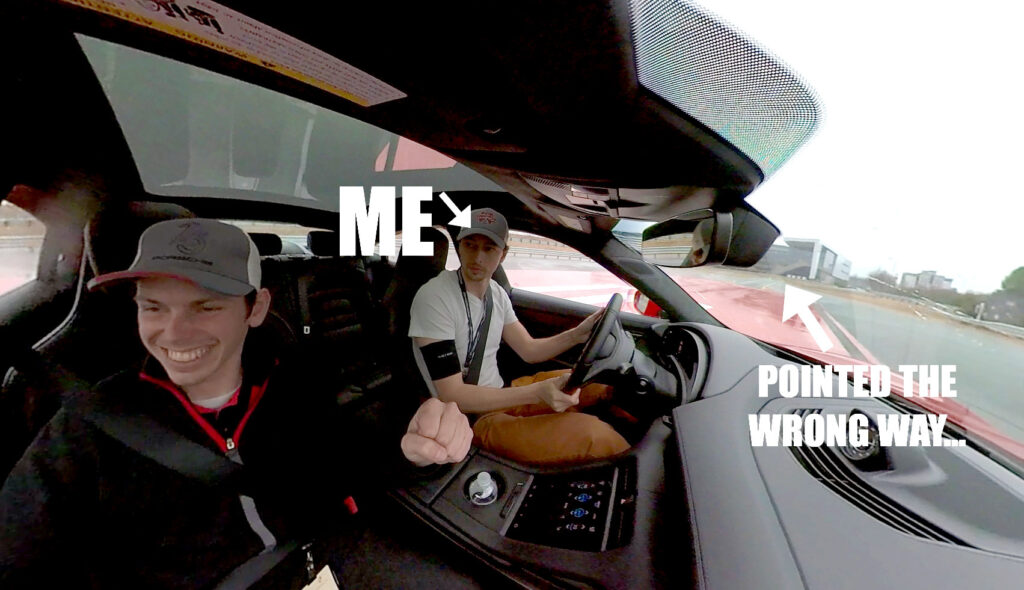
–>
Owning a high-performance vehicle is one thing, but mastering its control, as well as that of any other vehicle, is an entirely different skill. At the Porsche Experience Center in Atlanta, Georgia, the automaker offers expert training that encompasses both road and track driving techniques.
The center opened its doors back in 2015 with a large complex and what it calls the South Track. Visitors can do everything from take delivery of their latest Porsche purchase, configure their next Porsche, enjoy rotating exhibits, and learn better driving skills both on the racetrack and through virtual reality.
During my visit to the complex for the unveiling of the new Macan EV, I also had the chance to experience what customers have available to them at the track. I’d like to think that I came away a better driver but I certainly came away better informed. Here’s what you can expect during a day of driving at the Porsche Experience Center in Atlanta.
Beyond Apexes
advertisement scroll to continue
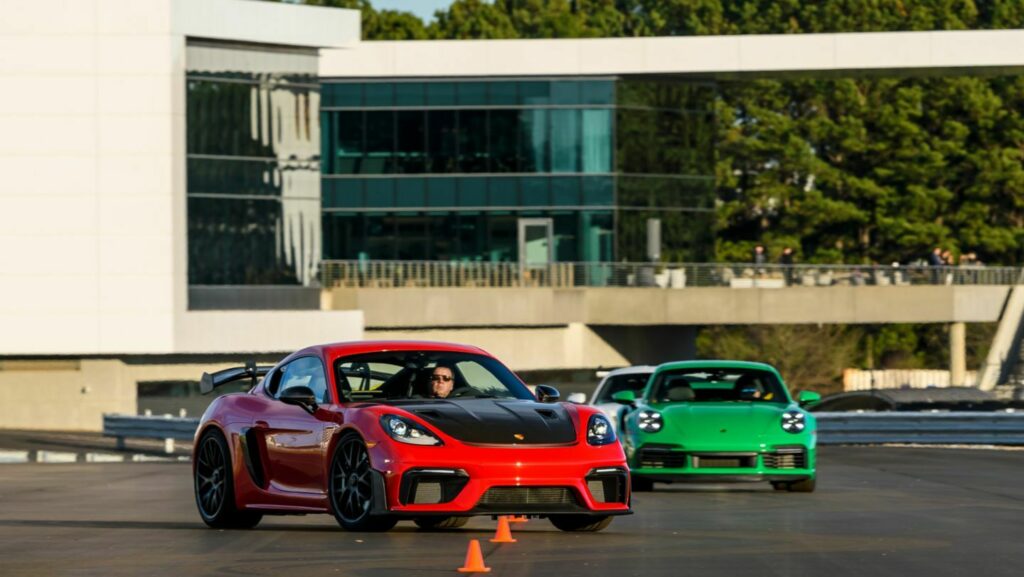
Driving a car at a high level isn’t simply about shortening a race course by hitting all of the apexes. Car control goes far deeper than that and it starts with understanding how the vehicle behaves under various circumstances. Building a knowledge of the visceral tactile sensations that wash over your senses is key and that’s why Porsche didn’t stop at simply building a track in Atlanta.
The original complex has a few unique spaces that we’ll come back to but my day started on the new West Course. It consists of a multi-layout track with several turns that were modeled after famous racing tracks from around the world. The Carousel, the Corkscrew, and the esses from VIR are all stitched into the course. My instructor, Michael Bilyy, and I started on the dynamic pad area though.
It’s on this large flat space that Porsche has set up two different autocross courses and it’s where one gets a feel for the car before hitting the track. To begin, we tested out the limits of acceleration and braking with multiple 0-60 runs down a soaking-wet track. Each run came with detailed instructions from Bilyy about ways to increase my speed such as, “use your quad to modulate the pedal pressure instead of your ankle.”
Grip At The Limit
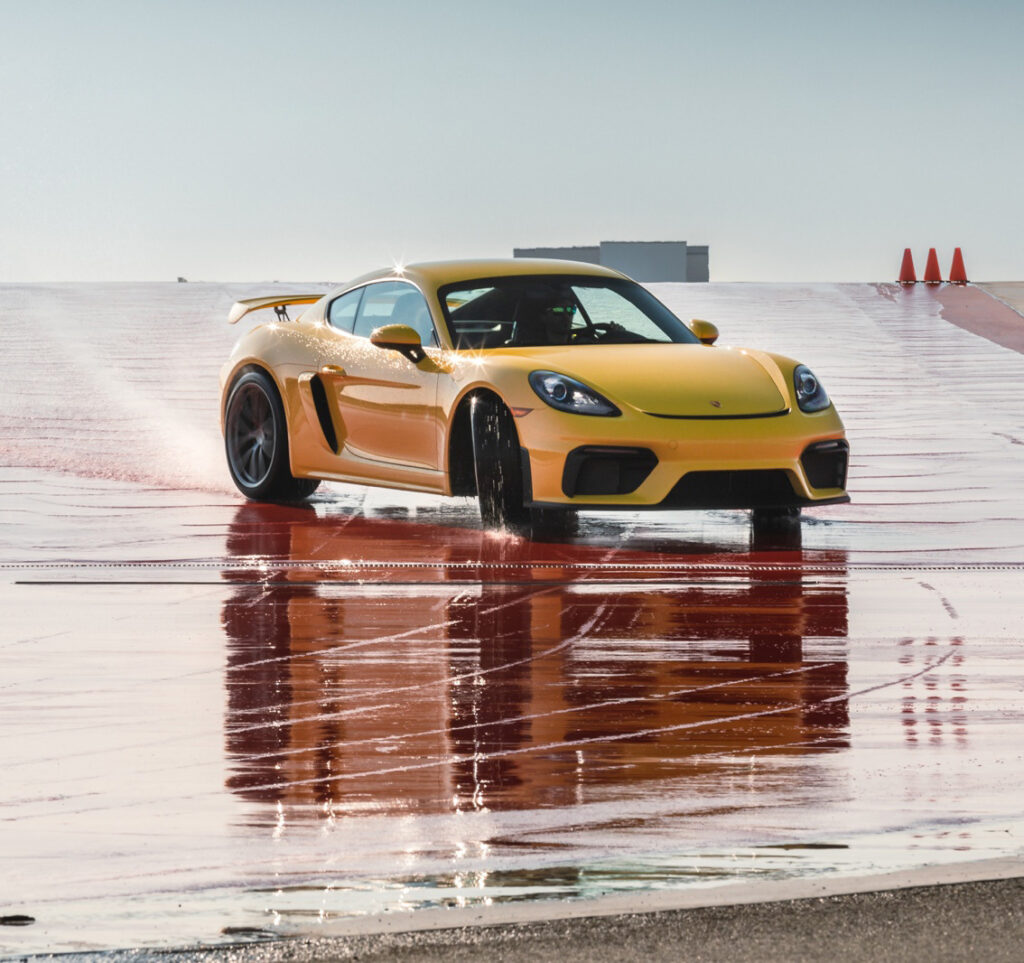
Next, we headed over to “Ice Hill” which is both correct and incorrectly named. See, there’s no ice on Ice Hill but it’s incredibly slick by design. Porsche uses a polished concrete surface (sometimes with an epoxy coating) in a number of places around the complex and this is one of them.
On top of that, a sprinkler system at the top of the hill continually pours water down the hill. The hill portion itself, an 8% grade over 300 feet long, ensures that grip is incredibly limited in both directions both up and down. Bilyy had me drive both up and down the hill with varying challenges.
Going up the hill began with simply trying to get and keep grip. Once I had that down, the next task was to hammer the accelerator, maintain progress up the hill, but at the same time not allow the car to bounce off of the rev limiter. By far, this was the hardest challenge all day.
[embedded content]
On the flip side, the downhill portion of Ice Hill proved to be the easiest for me personally. Many years of navigating Colorado winters no doubt helped, but stopping on a slick surface was still an interesting challenge in a car easily worth triple digits.
The first time down the hill I managed to use threshold braking to keep the ABS away altogether and then a second time was told to intentionally engage the ABS and then learn where to back off. It was fun and helped tune my foot to the feeling of the rest of the day’s activities.
Track Time
advertisement scroll to continue
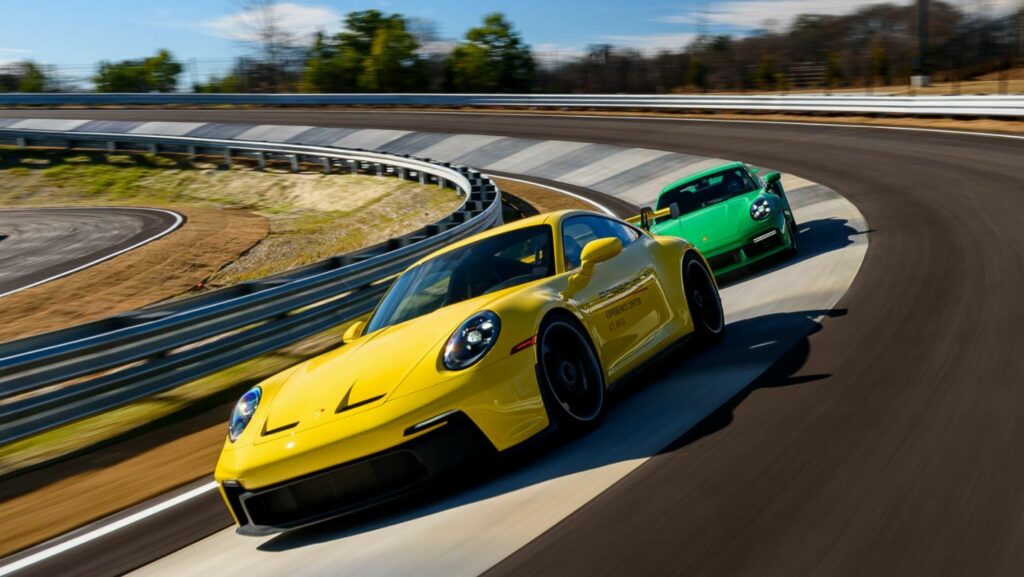
The vast majority of the day was spent on the track in two different cars, a Taycan Turbo S and a 911 Turbo S. I’ll get into the way each one feels in their own individual mini-reviews in the near future so let’s focus on the training here. Suffice it to say, two full hours on a track with a highly-skilled driver like Bilyy has me more eager than ever to get back out there.
We started with simply getting to know the course. It begins with an uphill string of esses that mimic those found at VIR. Then it dips down hard to the right before two tight concurrent left-hand turns send you back into the air multiple stories above the rest of the course. Then, you drop back down in a Corkscrew turn that pays homage to the one at Laguna Seca but in reverse.
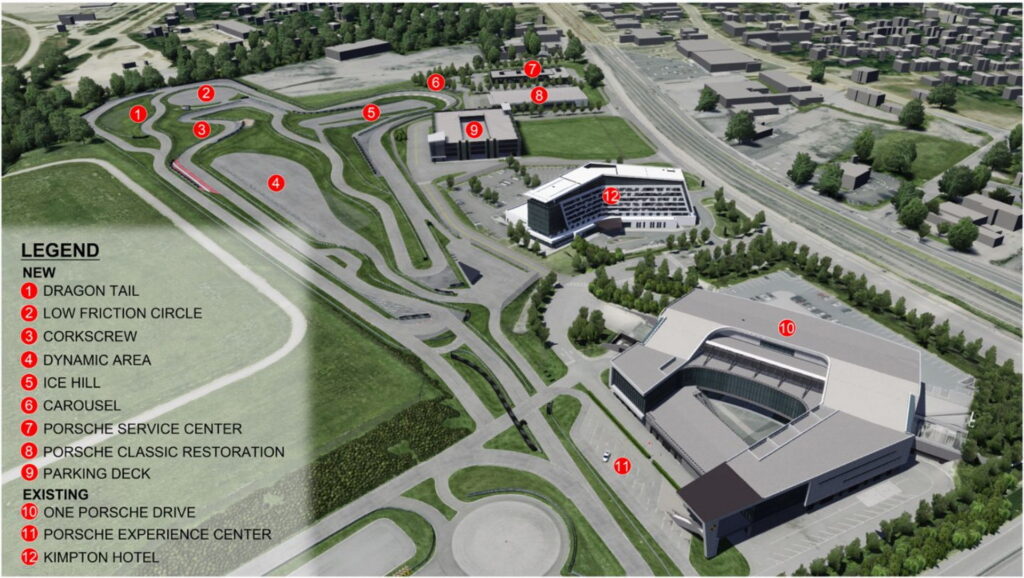
That sends you down a short straight away before a hairpin leads to the long back straight. From there, the course offered two variations of which we took the rightmost path each time. It consists of more esses that lead into a right-hand corner, then a left, and into Porsche’s own Carousel turn. Once it finishes you find yourself back on a small straightaway before making a hairpin and starting the whole thing again.
Finding the right line is something I felt comfortable with but the elevation changes and the banking of the turns at the West Track had me clearly out of my comfort zone. Bilyy’s instruction was largely to look far ahead of what feels natural. “When you’re looking uncomfortably far ahead is when you’re looking at the right spot,” he’d repeat from time to time.
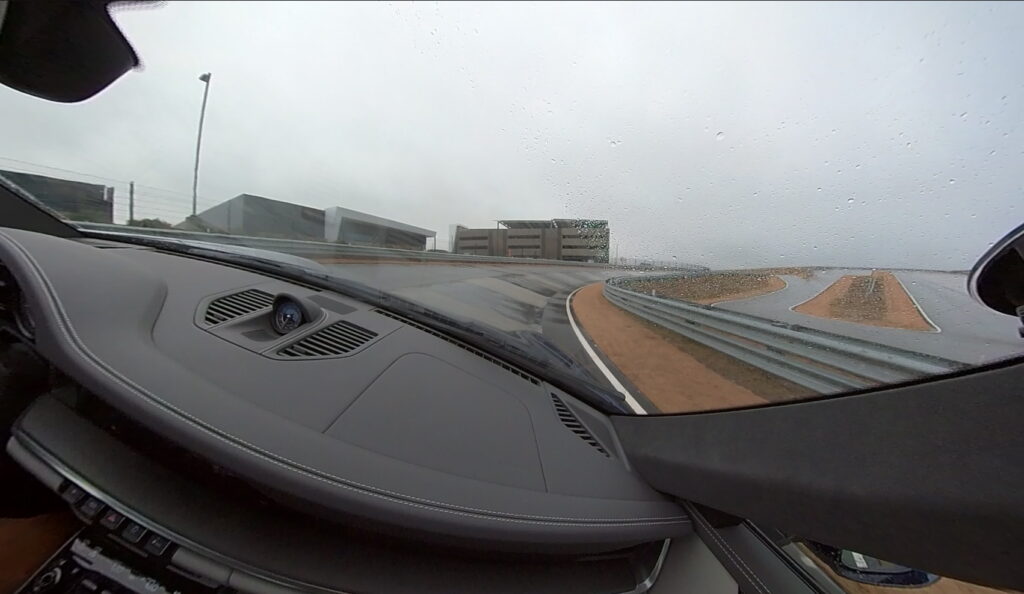
Looking far ahead allows your body to more naturally react to the road beneath you. It’s less about thinking and more about feeling what the car needs and that’s good because the track comes too quickly to logically think about each and every decision one needs to make.
The next big change came to my braking style. Perhaps it comes from watching too much Drive to Survive but I’ve always been very aggressive on the pedals. That’s typically good when it comes to initial braking as it can allow you to brake later and keep speed for longer.
What isn’t so great is how quickly I’d come off of the pedal and try to go back to the throttle. Instead, Bilyy had me wait a touch longer to go to brake and then ease off of it more gently, which helps to maintain speed but also balance.
Completely dropping out of the brake pedal can, at times, unsettle the car, especially in the case of a 911, so a smoother disengagement made for more accurate steering and smoother transitions between track sections.
Having A Little Fun And Learning Along The Way
[embedded content]
Once the track experience was over, Bilyy took me over to the South Track to try out two more fun little experiences the center offers. First was the Kick Plate which sounds complex but is pretty straightforward in practice. Like the Ice Hill, the surface is slick and constantly soaked with water.
What’s very different though is that it’s completely flat and one drives over the actual kick plate to experience the test. The kick plate itself is relatively small and sits just at the starting edge of the test area. As a car drives over it, the plate senses once the front wheels are past it, then senses when the rear wheels touch it. When that happens it randomly slides the base left or right.
How fast it slides left or right is determined by the speed of the car in question. Go slow, it’ll kick pretty lightly. Go fast, and it’ll spin you out before you know what happened. I know that because the first time I did it I accidentally went into the plate at 28 mph when Bilyy wanted me to enter at 20. To put it simply, it kicked me off of the test surface and sent me spinning a full 360 degrees in the process.
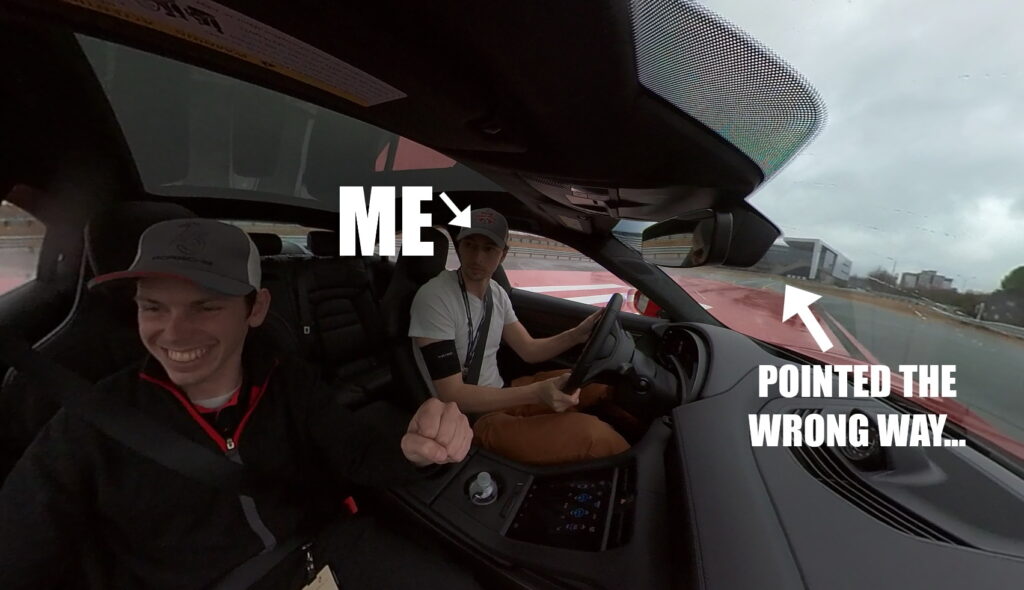
Thankfully, that was the last unintentional spin of the day. Subsequent attempts saw my skills improve each time and I managed to catch the car each time despite turning off the electrical assists and increasing my speed again. Interestingly, Bilyy even had me do one test at the very end with no hands on the wheel and all of the car’s safety systems turned on. The Porsche actually managed to correct the skid itself at 20 mph.
Then, we went over to the skid pad which is where I sort of learned to do a four-wheel drift in the Taycan Turbo S. Having done similar things in my old Subaru WRX I thought it would be somewhat easy, but it simply wasn’t. The Taycan Turbo S reacts so quickly to throttle input and has such a different sound and weight that it was sincerely hard to get the balance just right.
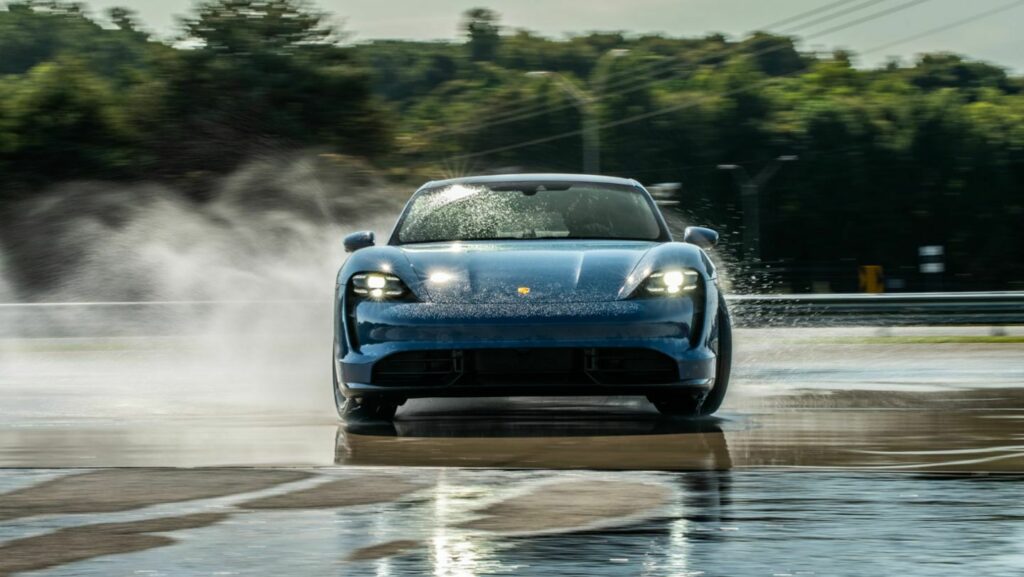
Even once that balance is achieved it’s hard to maintain because the Taycan is capable of doing a drift and a donut somewhat simultaneously. As I nearly managed and Bilyy easily demonstrated later, the car can be pointed at the center of the skid pad while traveling sideways and basically do that until the battery runs out. Of course, it can also do flat spins which was Bilyy’s final trick before our time on the course ended.
Having spent countless hours on games like Gran Turismo, multiple weekends at autocross events, and even a few track events in the last two years I can say this without a doubt. My time at the Porsche Experience Center shifted my view of how to be a fast driver as much or more as any of those past experiences.
